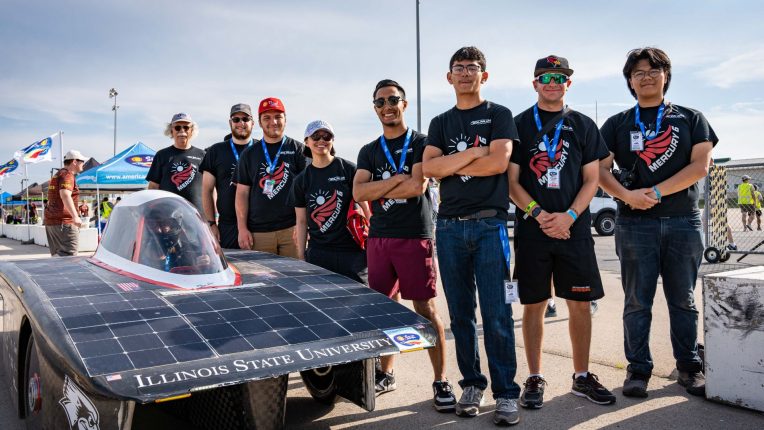Every two years Illinois State University’s Solar Car Team begins the process of designing a solar-powered car fit for winning a nearly 2,000-mile-long race.
The design process includes many steps that are to be expected—aerodynamics analysis, construction of the car’s layout, stress testing of the car’s shell and internal components. The catch? This process is almost entirely virtual.
The goal of the Illinois State Solar Car Team is to design and construct a solar-powered car according to the latest set of regulations released by the American Solar Challenge (ASC), then race that car at the ASC’s biennial race.
This virtual design process is made possible by Illinois State’s High Performance Computing (HPC) cluster. The HPC cluster, a data analysis tool housed in Julian Hall, is used to conduct analysis on large sets of data in a small amount of time.
Solar Car Team Advisor Jim Dunham, who has been with the team since its start in 2005, said the team uses the HPC cluster to identify tweaks that may need to be made to the car’s design.
“You want to limit the aerodynamic drag of the car and friction after the car starts moving,” Dunham said. “The biggest thing you’re fighting is wind resistance.”
The team visualizes how wind resistance will impact their car by creating a wind tunnel simulation. By putting a digital design of the car into the simulation, the team can visualize how the aerodynamic shape of their car interacts with wind resistance it will encounter during races.
This is where the cluster comes into play.
Because running more complex simulations provides the team with more accurate information on the success of the car’s design, the team needs to be able to make massive amounts of different calculations all at one time. Though basic calculations can be completed on one of the computers in Julian Hall’s Digital Innovation, Graphics, and Gaming Studio (DIGGS) lab, trying to run a full simulation on a lab computer would not be possible.
According to Dunham, when trying to run a simulation in his lab, his computer was not even able to create a file for the immense amount of data involved.
For this reason, access to the HPC cluster is vital to the team’s design process, as they run numerous simulations over the course of a year to ensure they have the best design with the least amount of resistance possible before they begin construction.
In the team’s most recent design stage, they ran 100 different simulations on the car, while making design adjustments along the way. Once simulations are done, construction of a new car for the team can begin.
Following a third place win at the ASC Electrek Formula Sun Grand Prix in Topeka, Kansas, this summer, the team is looking to finish simulations and start a new car this fall.


